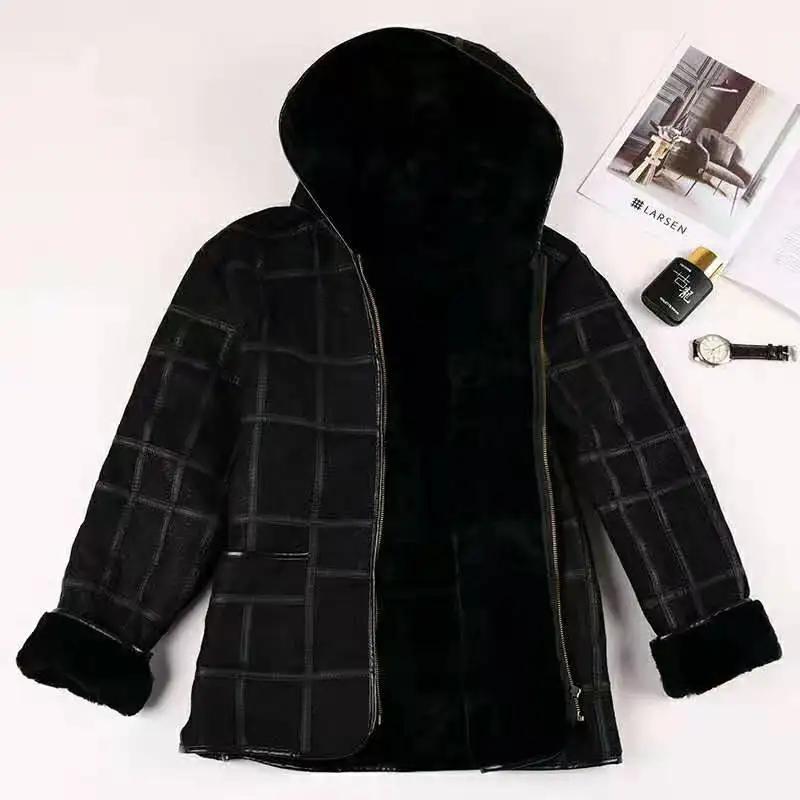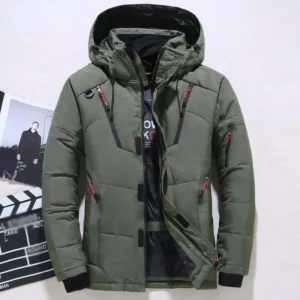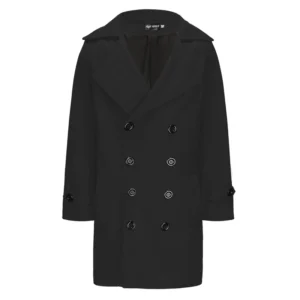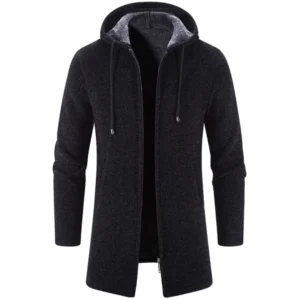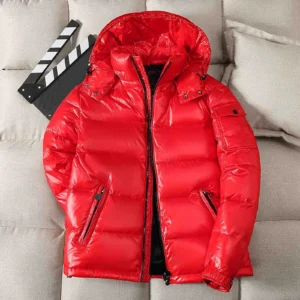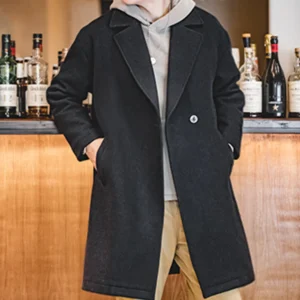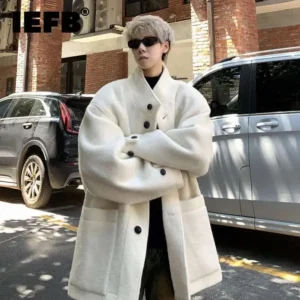In a Rush? The Quick Answer to Your Warmth Question
When temperatures drop and winter sets in, the eternal question emerges: which coat will keep you warmer—puffer or wool?
For extreme cold conditions (below 20°F/-7°C), puffer coats generally provide superior warmth due to their high-efficiency insulation that traps body heat exceptionally well. However, wool coats offer excellent warmth in moderate winter temperatures with the added benefits of natural temperature regulation and classic styling.
The truly “warmer” option depends largely on:
– The specific quality and construction of each coat
– Your local climate and weather conditions
– Your personal activity level while wearing the coat
– The fit and how you layer underneath
Making the right choice involves understanding how each coat type insulates across different coat lengths and weather scenarios. The perfect winter coat balances technical warming capabilities with your lifestyle needs.
Understanding Insulation: The Science Behind Staying Warm
To truly compare puffer and wool coats, we need to understand how insulation fundamentally works. Both coat types keep you warm using the same basic principle: trapping air.
The Physics of Staying Warm
Insulation works by creating dead air space that slows down heat transfer from your body to the cold environment. This process counteracts three types of heat loss:
- Conduction: Direct heat transfer through physical contact
- Convection: Heat loss through air movement around your body
- Radiation: Heat emitting outward from your body
Both puffer and wool coats create these insulating air pockets, but they do so in fundamentally different ways. Puffers use their fill (down or synthetic) to create loft that traps air in specific chambers. Wool, on the other hand, has natural crimped fibers that create millions of tiny air pockets within the material itself.
The overall effectiveness of any winter coat depends on several factors beyond just material:
- Quality and type of insulation
- Density of the insulation
- Wind resistance of the outer shell
- Ability to manage moisture
- Coverage area and fit
- Warmth-to-weight ratio
Understanding these wool coat insulation properties helps explain why there’s no universal answer to which coat type is warmest—each excels under different conditions.
Puffer Coats: Technical Breakdown of Their Warming Abilities
Puffer coats (also called down jackets or quilted coats) derive their exceptional warmth from their unique construction and insulation materials. Their distinctive “puffy” appearance comes from quilted sections called baffles that hold insulation in place.
Down Insulation: Nature’s Premier Insulator
Down insulation, harvested from the soft underlayer of feathers from ducks or geese, offers the highest warmth-to-weight ratio of any insulation material:
- Fill Power Ratings: This measures down quality, typically ranging from 450 to 900+
- 550-650 fill: Good warmth for moderate cold
- 700-800 fill: Excellent for very cold conditions
- 800+ fill: Premium warmth for extreme temperatures
Higher fill power means greater loft and more trapped air, resulting in superior insulation without added weight. A high-quality 800 fill power puffer can provide extraordinary warmth while remaining remarkably lightweight.
Synthetic Insulation Alternatives
Modern puffer coats also utilize advanced synthetic insulations like PrimaLoft, Thinsulate, or proprietary blends that offer several advantages:
- Maintains insulating properties when wet (unlike traditional down)
- Dries more quickly than down
- Often more affordable than high-quality down
- Hypoallergenic properties
- Easier to care for
Synthetic insulation typically weighs more than down for equivalent warmth but provides better performance in wet conditions.
Outer Shell Considerations
A puffer coat’s shell material significantly impacts its overall warming ability:
- Tightly woven nylon or polyester: Blocks wind effectively
- DWR (Durable Water Repellent) treatments: Prevent moisture from reaching insulation
- Ripstop construction: Maintains insulation integrity by preventing tears
The best puffer coats combine premium insulation with technical shell materials that block wind and repel moisture—two critical factors in maintaining body heat.
Wool Coats: Natural Insulation Properties and Performance
Wool has served as a premier cold-weather material for centuries, providing reliable warmth with distinctive natural properties that synthetic materials cannot replicate.
The Natural Magic of Wool Fiber
Wool’s exceptional warming properties stem from its microscopic structure:
- Crimped fibers: Create millions of tiny air pockets for insulation
- Natural elasticity: Allows the material to retain its shape and insulating properties
- Hygroscopic qualities: Can absorb up to 30% of its weight in moisture without feeling wet
- Temperature regulation: Wool buffers against temperature fluctuations
These unique properties make wool an active insulator that responds to your body and the environment, rather than a passive barrier.
Types of Wool and Their Warming Properties
Not all wool is created equal—different varieties offer varying degrees of warmth and comfort:
- Merino wool: Extremely fine fibers (under 24 microns) provide exceptional warmth without bulk or itchiness
- Lambswool: Soft with excellent insulation, often used in premium coat linings
- Cashmere: Ultra-fine luxury wool with outstanding warmth-to-weight ratio
- Melton wool: Dense, heavily felted wool with superior wind resistance
- Wool blends: Often mixed with synthetic fibers for improved durability or reduced cost
The warmth of wool coats is typically measured by weight (ounces per yard). Heavier weights (24-32 oz) provide greater warmth for severe winter conditions, while medium weights (18-24 oz) suit most everyday winter wear.
Construction Elements Affecting Warmth
A wool coat’s warming ability depends significantly on its construction:
- Weave density: Tighter weaves trap more air and block more wind
- Coat thickness: Directly impacts insulation capacity
- Lining materials: Can enhance warmth and comfort
- Double-breasted designs: Provide an extra layer of insulation across the torso
Unlike puffer coats, wool coats don’t rely on fill ratings but rather on material quality, construction techniques, and overall design to achieve their warming properties.
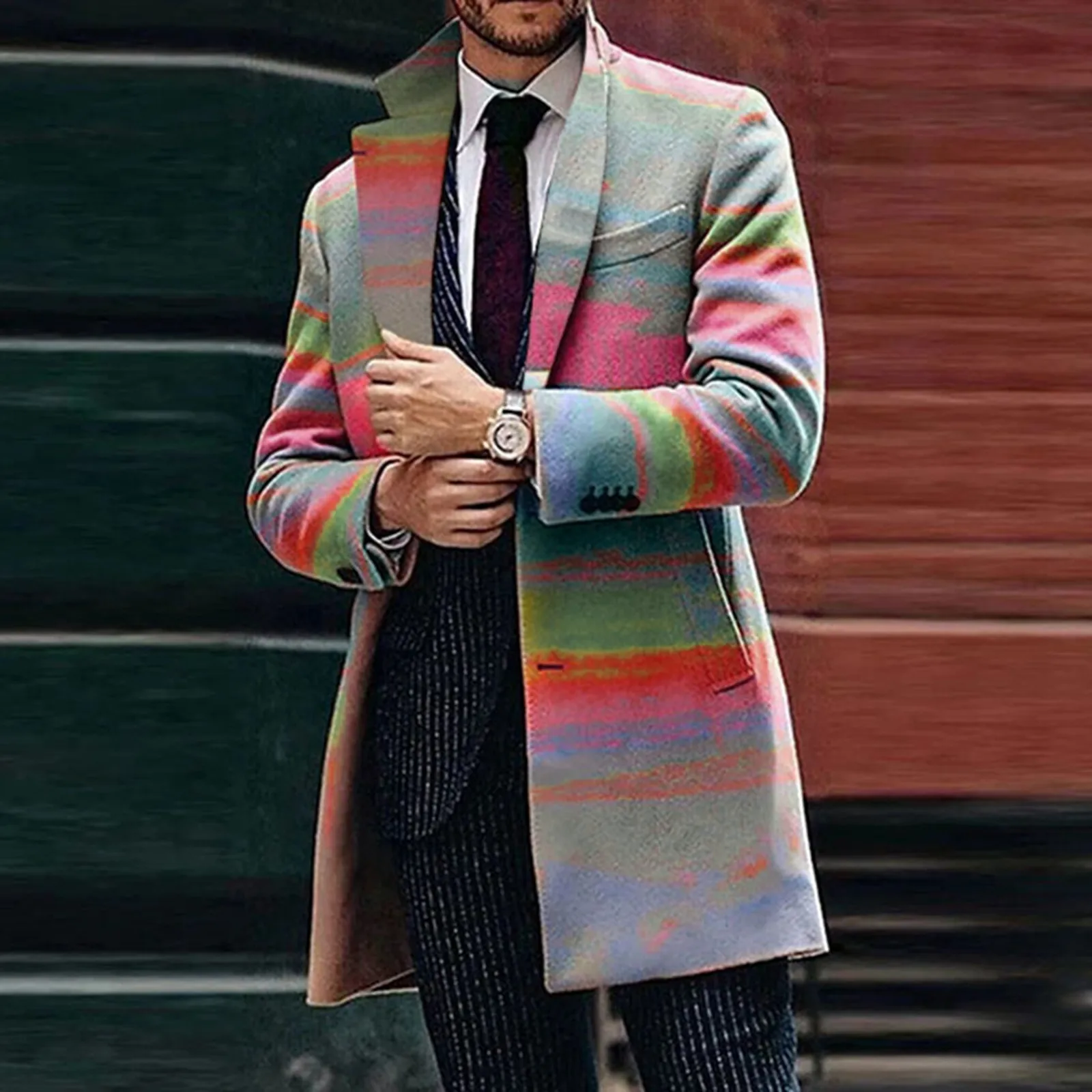
Head-to-Head Comparison: Puffer vs. Wool in Different Conditions
When comparing these two coat types across different conditions, each reveals distinct advantages. This comprehensive comparison helps identify which coat excels in specific situations.
| Performance Factor | Puffer Coats | Wool Coats |
|---|---|---|
| Extreme Cold (-10°F/-23°C and below) | Superior ★★★★★ | Good ★★★☆☆ |
| Moderate Cold (20-32°F/-7-0°C) | Excellent ★★★★☆ | Excellent ★★★★☆ |
| Wet Conditions | Good (synthetic) / Poor (down) ★★★☆☆ | Good (naturally water-resistant) ★★★☆☆ |
| Wind Resistance | Excellent ★★★★★ | Good to Excellent (depends on weave) ★★★★☆ |
| Breathability | Fair ★★☆☆☆ | Excellent ★★★★★ |
| Weight | Very Light ★★★★★ | Heavy ★★☆☆☆ |
| Compressibility | Excellent ★★★★★ | Poor ★☆☆☆☆ |
| Temperature Regulation | Fair ★★☆☆☆ | Excellent ★★★★★ |
| Durability | Good ★★★☆☆ | Excellent ★★★★☆ |
Performance in Specific Conditions
Dry, Extreme Cold:
Puffer coats dominate in extremely cold, dry conditions. The lofty insulation creates exceptional dead-air space that traps body heat efficiently. High-quality down puffers with at least 700 fill power provide maximum warmth in temperatures well below freezing, making them the preferred choice for extreme cold environments.
Wet Conditions:
In wet environments, synthetic puffers outperform down versions, which lose insulating properties when damp. However, wool performs remarkably well in damp conditions due to its natural water-resistant properties and ability to insulate even when wet. Wool fibers can absorb up to 30% of their weight in moisture while still keeping you warm.
Windy Conditions:
Both coat types can perform well in windy conditions, but their effectiveness depends on specific design elements. Puffers with tightly woven shells excel at blocking wind, while wool coats need dense weaves (like melton wool) to provide comparable wind resistance.
Temperature Fluctuations:
Wool coats demonstrate superior performance when temperatures vary throughout the day. The natural temperature-regulating properties of wool fibers help maintain comfortable body temperature across changing conditions, preventing overheating when moving from cold outdoors to heated indoor spaces.
When to Choose a Puffer Coat for Maximum Warmth
Puffer coats represent the optimal choice in several specific scenarios where their unique properties provide clear advantages:
Best Scenarios for Puffer Coats
- Arctic or extreme winter conditions (below 20°F/-7°C)
- Outdoor winter activities requiring freedom of movement (skiing, snowshoeing)
- Situations requiring packability (travel, hiking, variable conditions)
- Lightweight warmth needs where bulk must be minimized
- Layering systems where the coat must work with technical base and mid layers
For the most challenging winter conditions, a quality down coat with high fill power (800+) provides unmatched warmth-to-weight ratio. The lofty insulation creates exceptional heat retention without the heavy feel of traditional winter coats.
Selecting the Right Puffer for Your Needs
- For dry, extremely cold conditions: Choose high-fill-power down (800+) with baffled construction
- For wet, cold environments: Opt for synthetic insulation or hydrophobic down treatments
- For active pursuits: Select more flexible, articulated designs with stretch panels
- For everyday urban use: Consider a longer length for additional coverage
To maintain maximum warming performance, regularly fluff your puffer coat and store it uncompressed on a wide hanger or in the storage sack provided. Clean according to manufacturer instructions to maintain loft and insulating properties.
When to Choose a Wool Coat for Reliable Warmth
Wool coats shine in numerous scenarios where their combination of natural insulation, classic styling, and versatility makes them the superior choice.
Best Scenarios for Wool Coats
- Moderate winter temperatures (20-40°F/-7 to 4°C)
- Urban environments with varied exposure (walking outdoors, public transit)
- Professional or formal settings requiring refined appearance
- Conditions with temperature fluctuations throughout the day
- Situations requiring moisture management and natural temperature regulation
A well-constructed wool overcoat provides reliable warmth with timeless style, making it particularly well-suited for professional environments where appearance matters as much as function.
Selecting the Right Wool Coat for Your Needs
- For maximum warmth: Choose heavy melton wool (24-32 oz) with a double-breasted design
- For versatile performance: Select mid-weight wool (18-24 oz) with natural water resistance
- For formal settings: Consider classic overcoat styles in darker colors
- For active urban use: Look for wool-blend peacoats or duffle coats with hood options
The addition of a thinsulate lining or cashmere blend can significantly enhance the warming properties of wool coats without adding substantial bulk. For optimal warmth retention, ensure proper fit with room for light layering underneath.
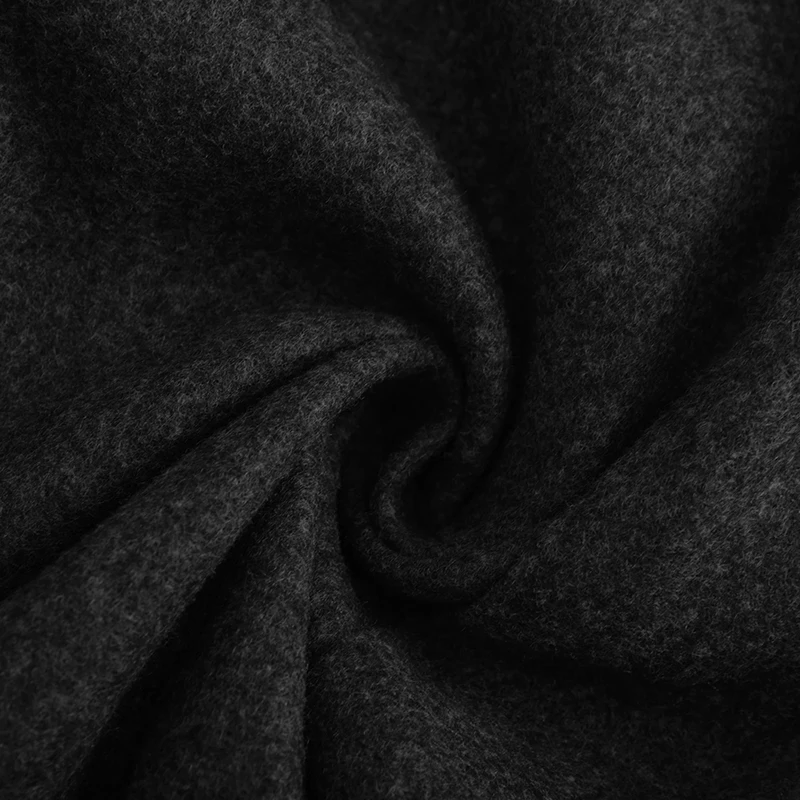
Maximizing Warmth: Expert Strategies for Both Coat Types
Regardless of which coat type you choose, implementing these expert strategies can significantly enhance warmth performance.
Universal Warmth-Maximizing Techniques
Master the art of layering
– Start with moisture-wicking base layers that keep skin dry
– Add insulating mid-layers like merino wool or fleece
– Ensure your coat has sufficient room to accommodate layers without compressing themFocus on closure systems
– Verify that zippers, buttons, or snaps create complete seals
– Choose coats with storm flaps over zippers or double-breasted designs
– Look for adjustable cuffs and drawcord hems to prevent heat escapeDon’t neglect extremities
– Heat loss through your head and neck can undermine your coat’s effectiveness
– Pair coats with appropriate hats, scarves, and gloves
– Consider the perfect winter coat length to protect your core and upper legs
Coat-Specific Optimization Tips
For Puffer Coats:
– Periodically “fluff” the coat to maintain maximum loft
– Store uncompressed when not in use
– Consider adding a DWR spray to enhance water resistance
– Repair small tears immediately to prevent insulation loss
For Wool Coats:
– Apply fabric water repellent designed for wool
– Brush regularly to maintain the nap and insulating properties
– Use quality hangers to maintain shoulder structure
– Consider steam rather than dry cleaning to maintain natural oils
Regardless of coat type, proper fit is crucial—too tight restricts the insulating air layer, while too loose allows cold air circulation. The ideal fit permits comfortable movement with enough room for light layering.
The Hybrid Approach: Combining Wool and Puffer Elements
Modern outerwear design has increasingly embraced hybrid approaches that combine the best aspects of both wool and puffer coats, creating versatile options for varied winter conditions.
Innovative Hybrid Designs
Today’s market offers several effective hybrid combinations:
- Wool coats with quilted puffer linings that combine classic appearance with technical warmth
- Technical shells with wool insulation panels in strategic areas
- Sheepskin coats that naturally integrate leather/wool exterior with insulating properties
- Wool-insulated puffers that replace synthetic or down fill with wool batting
These hybrid designs excel in variable conditions where neither traditional option alone would provide optimal performance across all situations.
Mens Big and Tall Winter Coats, Mens Down Coat, Mens Hooded Winter Coat, Mens Puffer Coat
Price range: $126.44 through $217.01 Select options This product has multiple variants. The options may be chosen on the product pageMens Double Breasted Pea Coat, Mens Wool Blend Coat, Mens Wool Pea Coat
Price range: $136.84 through $157.36 Select options This product has multiple variants. The options may be chosen on the product pageMens Cashmere Overcoat, Mens Hooded Winter Coat, Mens Wool Blend Coat
Price range: $128.72 through $139.68 Select options This product has multiple variants. The options may be chosen on the product pageMens Hooded Winter Coat, Mens Insulated Coat, Mens Puffer Coat, Mens Quilted Coat
Price range: $139.88 through $177.72 Select options This product has multiple variants. The options may be chosen on the product pageMens Black Overcoat, Mens Black Wool Coat, Mens Wool Overcoat
$339.18 Select options This product has multiple variants. The options may be chosen on the product pageMens Grey Overcoat, Mens Wool Blend Coat, Mens Wool Overcoat
$201.28 Select options This product has multiple variants. The options may be chosen on the product page
Strategic Layering for Maximum Versatility
Another hybrid approach involves strategic layering of both coat types:
- Wear a slim-profile down jacket under a slightly oversized wool overcoat for extreme cold
- Use a wool blazer or cardigan as a mid-layer under a technical puffer for business-appropriate warmth
- Select a three-in-one system with detachable components that can be worn separately or together
This modular approach provides adaptability to changing conditions throughout the season or even during a single day, combining the distinct advantages of both materials.
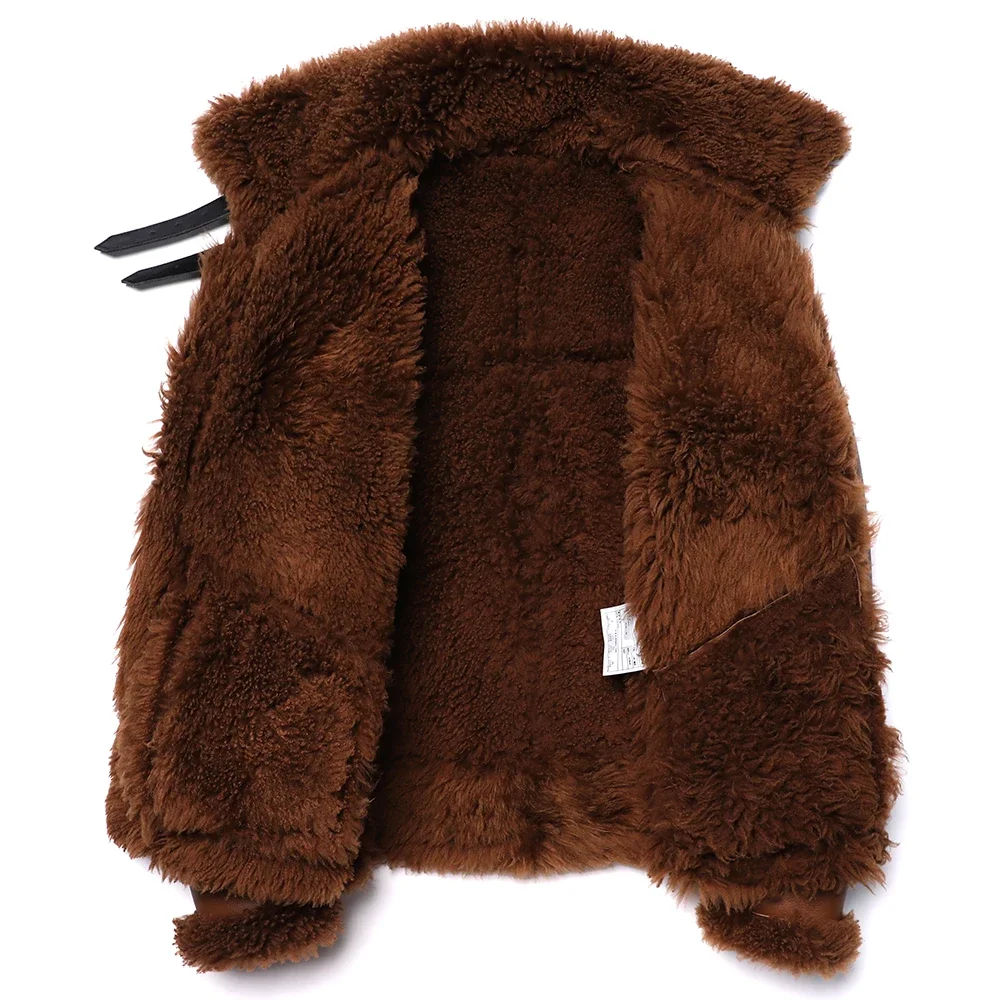
Frequently Asked Questions About Coat Warmth
Can wool coats handle snow and rain?
Wool naturally repels light moisture due to its water-resistant lanolin coating. While not completely waterproof, quality wool coats can handle light snow and brief rain exposure without compromising warmth. For heavier precipitation, consider wool with added water-resistant treatments or pair with a water-resistant shell.
Which insulation type has the best warmth-to-weight ratio?
High-quality goose down (800+ fill power) provides the highest warmth-to-weight ratio of any insulation material, natural or synthetic. This makes premium down puffers exceptionally warm for their minimal weight. However, this advantage disappears when down becomes wet.
How long do warming properties last in each coat type?
With proper care, a quality wool coat can maintain its warming properties for 10+ years, often improving with age as the fibers settle. Puffer coats typically maintain optimal insulation for 5-7 years before fill compression reduces effectiveness, though premium models with higher-quality materials may last longer.
Are there eco-friendly options that don’t sacrifice warmth?
Yes, several eco-friendly options provide excellent warmth. Look for recycled down or PrimaLoft Bio (biodegradable synthetic insulation) in puffers. For wool, seek RWS (Responsible Wool Standard) certification or recycled wool blends that maintain excellent insulating properties while reducing environmental impact.
How can I tell if a coat provides enough warmth for my climate?
Beyond material, examine construction details like insulation thickness, baffle design (in puffers), fabric weight (in wool), and features like sealed seams, storm flaps, and adjustable closures. The short vs. long coat design also significantly impacts overall warmth for your specific climate conditions.
Making Your Final Decision: Practical Considerations Beyond Warmth
While warmth is paramount in winter coat selection, several additional factors should influence your final decision between wool and puffer options.
Lifestyle Alignment
Your daily routine should heavily influence your choice:
– Urban commuters who alternate between outdoors and heated transportation might prefer wool’s temperature regulation
– Outdoor enthusiasts facing extended exposure in variable conditions may benefit from a puffer’s technical performance
– Professionals requiring formal appearance with reliable warmth often find wool coats more versatile
Climate Realities
Your local winter conditions should guide your selection:
– Consistently frigid, dry environments favor puffer coats
– Moderate temperatures with occasional precipitation favor wool coats
– Wet, cold climates might require either a synthetic puffer or specially treated wool
– Variable conditions might suggest a hybrid approach or layering system
Consider factors beyond just temperature—humidity levels, precipitation patterns, and wind conditions all impact coat performance and should influence your coat length selection.
The Value of Versatility
For many, the ideal solution isn’t choosing between wool and puffer, but understanding when each excels. Many Metro Cloak customers eventually invest in both types, recognizing that each serves different needs within a complete winter wardrobe.
The perfect winter coat balances technical performance with personal needs—whether that’s the lightweight warmth of a premium down puffer or the timeless elegance and natural insulation of a wool overcoat. By understanding the strengths of each, you can make a confident choice that keeps you comfortably warm throughout winter.

